 I’ve written many articles on the importance of making sure the story we tell ourselves is helpful to our sense of well-being, healthy relationships, and happiness. How we perceive something matters.
I’ve written many articles on the importance of making sure the story we tell ourselves is helpful to our sense of well-being, healthy relationships, and happiness. How we perceive something matters.
Recently, I had two experiences that cemented what I have learned in over a decade and a half of taking control of how I ‘see’ what is happening in my life, both in the past and present. I’m sharing one experience today and the other next week. They are powerful.
Stress Is a Killer!
When I began caregiving my mom 6 ½ years ago, I did a lot of reading on dementia, so I would know how to care for both of us. There was a lot of useful information. In most of the books and articles I read, I also found this counsel: “Caregiving can be extremely demanding, both physically and emotionally…Studies have shown that family caregivers are at a higher risk of mortality compared to non-caregivers. Approximately 30% of family caregivers die before the person they are caring for.” This information was so prevalent in what I read and heard from other caregivers, that I beleived it was true and it concerned me. I was caregiving three people, in a 4-generation home.
There is also a common belief in the minds of the public that stress, from any situation that is ongoing, is toxic. Stress has been blamed for catching the common cold to creating cardiovascular problems. For example, one article I read said: Stress can have significant physical and physiological effects on the body. Here are some of the key ways that stress can impact your health:
Cardiovascular System:
• Increased heart rate and blood pressure
• Dilated blood vessels
• Increased risk of heart disease, stroke, and hypertension
Endocrine System:
• Release of stress hormones (e.g., cortisol, adrenaline)
• Increased blood sugar levels
• Changes in metabolism and fat distribution
• Increased risk of obesity and type 2 diabetes
The list went on covering other body parts and organs. I wondered how I could manage what I had taken on and remain healthy. I had stress management tools and I used them, but stress is ever present when caregiving, and according to what seemed to be true, I was definitely in harm’s way.
A few years ago, someone reached out who wanted to add a new stress tool to my arsenal to help me have a healthier brain. Here’s the pitch:
S T R E S S
These 6 letters can completely ruin your brain health and create short-term memory loss. Chronic stress, the kind that has you up at night, eats away at the memory sector of your brain, the hippocampus. It causes inflammation, throws your hormones out of balance and there is a big school of medicine that believes most diseases are caused by chronic stress.
•Stress is your brain’s #1 enemy – it is the single largest reason for your memory issues
•Unless you do something to manage your stress on a daily basis your memory, and your brain health will quickly deteriorate.
Here was my response to a question the sender asked: “I am convinced that stress is the cause of my detail memory being so compromised.” I had bought into this belief about stress hook, line, and sinker.
This Was MINDBLOWING!
Last fall I listened to a Ted Talk on stress. It was mind-blowing! The title was How to Make Stress Your Friend by Kelly McGonigal, a psychologist. She told us that for years she had warned her patients about the dangers hidden in stress. But recently, she had been introduced to new research that blew her mind!
It turns out that stress, whether you are caregiving, have a tough job, or are parenting, doesn’t need to take a toll on your health. In fact, it can improve your heart and health. Yes, you heard me correctly!! Her information on how stress is good for your heart was so unexpected and came from reliable research.
McGonigal said: “Stress. It makes your heart pound, your breathing quicken, and your forehead sweat. But while stress has been made into a public health enemy, new research suggests that stress may only be bad for you if you believe that to be the case.”
One research study showed that people with the same type and amount of stress either died or lived depending on their beliefs about stress. This made me sit up and pay attention. As I researched this new idea, I read this: “With demands on time, energy, emotions, and relationships, caregiving isn’t easy. So, you might think it would take its toll on the physical health of those who care for family members with chronic conditions. But new research offers a positive surprise: Family caregivers may live longer.”
McGonigal urged us to see stress as a positive and understand its value to the body. Also, to know that what you believe about stress impacts how it ultimately affects you. And there it is–our story matters, what we say and how we perceive what is happening brings about the result we get.
Not long after I heard the TED talk, I bought the book The Upside of Stress by Dr. McGonigal. I want to understand how stress can work in my favor. I want this information deep in my soul so that I can do what I have taken on and flourish. The read is fascinating.
Has understanding this changed anything in my day-to-day life? NO. I still clean up plenty of poop. Sitting down without interruptions is rarely an option. There is plenty of frustration and annoyance. My mother’s dementia is progressing, she has had a mini-stroke, and every day is a new normal. Watching someone die is like living on a roller coaster. Don’s surgery brought 6 weeks of extra work and stress. But now, with my new story, when I feel overly stressed, I straighten up and say to myself – “Way to go. This is so good for your heart. You’re going to live to be 100!”
And you know what, I believe it.
P.S. Next week I challenge the idea that we cannot change the past. I will share an example that will show you, you can! You are going to love this!
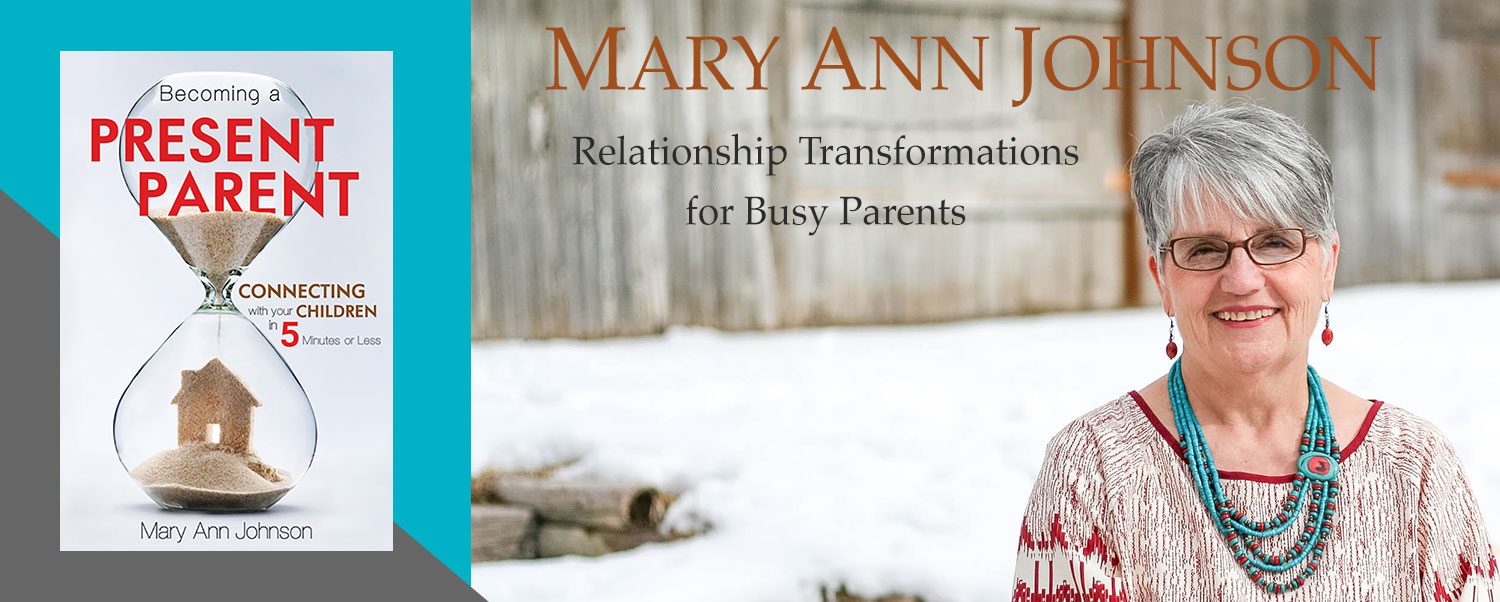


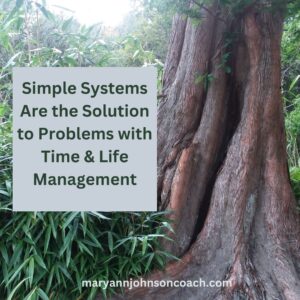 I have learned from lived experience that simple systems are usually the solution to difficult problems in time and life management. This was not an easy lesson to learn, and I occasionally still ignore this truth, but when I do,
I have learned from lived experience that simple systems are usually the solution to difficult problems in time and life management. This was not an easy lesson to learn, and I occasionally still ignore this truth, but when I do,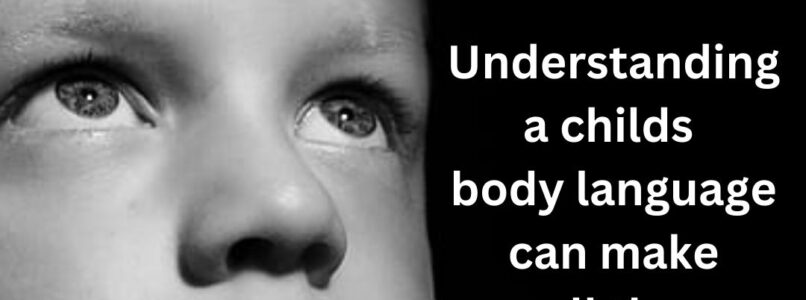
 When I began teaching, mentoring, and writing family-centered articles, I was working with the homeschool community. However, in 2016, as I started writing my book Becoming a Present Parent, I realized my message about connecting with children was beneficial to a wider audience.
When I began teaching, mentoring, and writing family-centered articles, I was working with the homeschool community. However, in 2016, as I started writing my book Becoming a Present Parent, I realized my message about connecting with children was beneficial to a wider audience. their brain.
their brain. brain.
brain. ears,
ears, very different things! When people look up towards the sky, they are looking to their Higher Power. They are looking for new answers, inspiration, and connection with whatever they believe in that is bigger than them.
very different things! When people look up towards the sky, they are looking to their Higher Power. They are looking for new answers, inspiration, and connection with whatever they believe in that is bigger than them. They are soul-searching. This answer may take longer to find. It also takes more trust to share. If you see your child look down, it’s essential to stop what you’re doing and adjust your focus to your child. When they find their answer, they will check in with you. If you’re not paying attention, they are not likely to share their thoughts. They will swallow them down and decide that how they feel is not important enough for your time.
They are soul-searching. This answer may take longer to find. It also takes more trust to share. If you see your child look down, it’s essential to stop what you’re doing and adjust your focus to your child. When they find their answer, they will check in with you. If you’re not paying attention, they are not likely to share their thoughts. They will swallow them down and decide that how they feel is not important enough for your time.
 This week’s article was written by an online friend of mine, Laura Pearson, who shared it with me via email. When I read her article, I realized that my daughter Jodie has incorporated many of these tips into her home and family life. They’ve been useful to my grands. Although they are all teens now, they have been using tools like these since they were in grade school.
This week’s article was written by an online friend of mine, Laura Pearson, who shared it with me via email. When I read her article, I realized that my daughter Jodie has incorporated many of these tips into her home and family life. They’ve been useful to my grands. Although they are all teens now, they have been using tools like these since they were in grade school.
 In 2011 I wrote a three-part series of articles about a principle that helps families manage better. I must confess it’s a principle I still work on because it isn’t easy to keep. I know the stories and the principle are worth repeating because principles never change and when lived, they impact us for good. I’m compiling the three-part series into one article. That will keep it simple for you. LOL
In 2011 I wrote a three-part series of articles about a principle that helps families manage better. I must confess it’s a principle I still work on because it isn’t easy to keep. I know the stories and the principle are worth repeating because principles never change and when lived, they impact us for good. I’m compiling the three-part series into one article. That will keep it simple for you. LOL
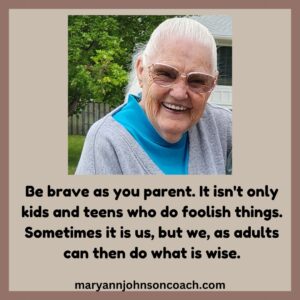 Parenting is a place to learn to grow as a person. Seriously. : ) Even now, when I’m caregiving, rather than parenting, I experience examples of this type of growth. It always takes me off guard because I would like to think that in almost 75 years, I had gotten this growth thing handled. Silly, because learning and personal growth are a lifetime endeavor.
Parenting is a place to learn to grow as a person. Seriously. : ) Even now, when I’m caregiving, rather than parenting, I experience examples of this type of growth. It always takes me off guard because I would like to think that in almost 75 years, I had gotten this growth thing handled. Silly, because learning and personal growth are a lifetime endeavor.
 I have a short list of thoughts/ideas I’m pondering. This list keeps important objectives at the front of my mind lest I forget. : )
I have a short list of thoughts/ideas I’m pondering. This list keeps important objectives at the front of my mind lest I forget. : )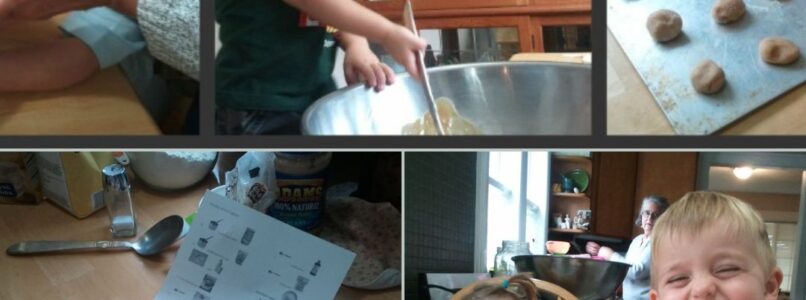
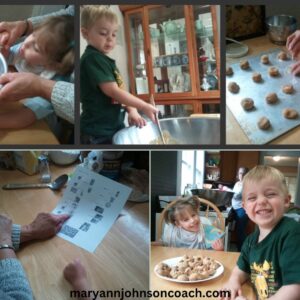 Let’s pick up where we left off last week. I shared
Let’s pick up where we left off last week. I shared 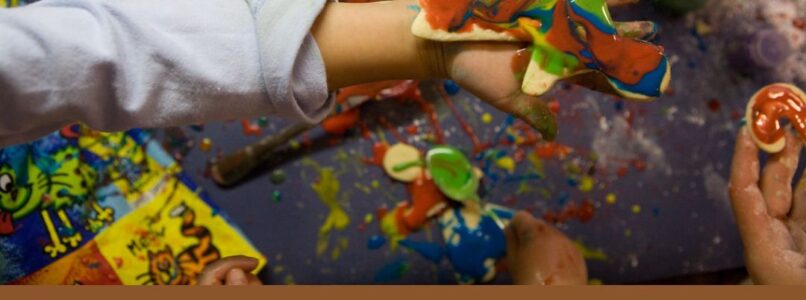
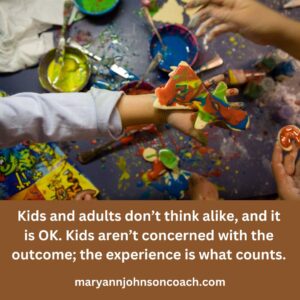 In the article published on
In the article published on
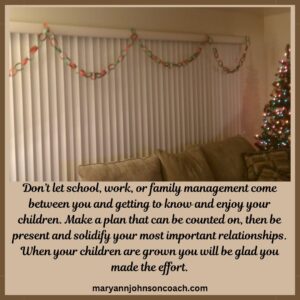 Thirteen years ago, I had a wonderful evening with my eight-year-old friend, Hailey. It was successful because time had been set apart for the activity, it happened consistently so Hailey could count on it, and I was present. When we want to solidify relationships in our family these three ingredients make all the difference.
Thirteen years ago, I had a wonderful evening with my eight-year-old friend, Hailey. It was successful because time had been set apart for the activity, it happened consistently so Hailey could count on it, and I was present. When we want to solidify relationships in our family these three ingredients make all the difference. 